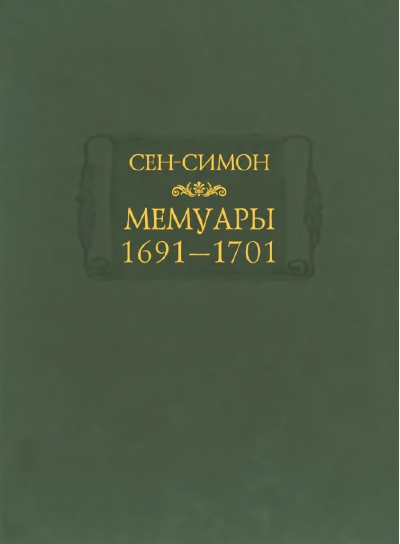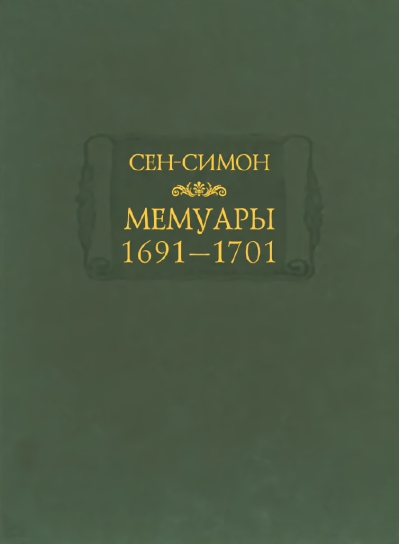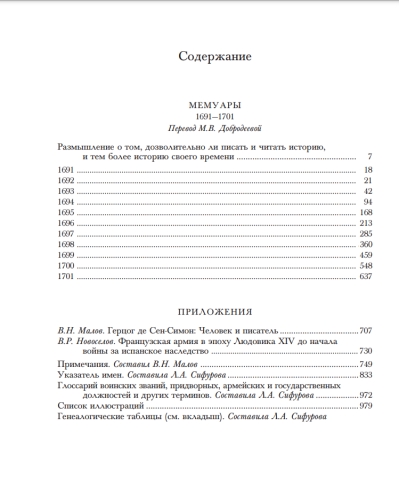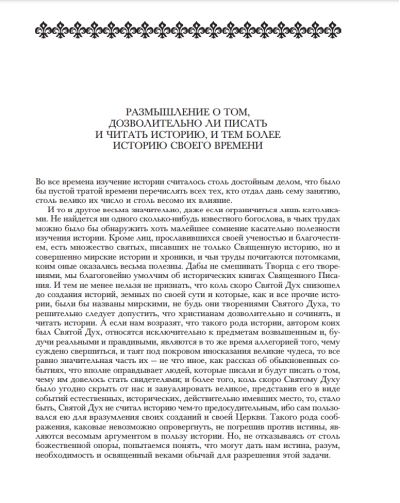Memoirs. 1691–1701
69.99 €
The only thing available 2
"Memoirs" of the Duc de Saint-Simon have a twofold value: historical and literary. First, it is a unique source of reliable information about the end of the reign of King Louis XIV and the Regency period. The author himself witnessed and often became an active participant in the military campaigns and court life events described by him, and was personally acquainted with the vast majority of the monarchs, aristocrats, clergymen, politicians, writers, artists and other notable personalities who played any significant role in France in the late XVII - early XVIII century.
Second, and from a literary and artistic point of view, Saint-Simon's "Memoirs" is an indisputably outstanding work. Among the huge number of memoirs of that time, it stands out for its unique style, subtle, often underlying irony, accurate, sometimes scathing, but has already become a classic thanks to countless quotes characterizations of historical characters - contemporaries of the author. Before the reader's gaze reveals the secret springs of domestic and foreign policy of the French royal court and a number of European powers (in particular, England, Spain, Portugal, Holland, Poland, Russia); unfolds unfortunate for France military campaigns, where the fleeting brilliance of victories is replaced by the bitterness of defeats, and heroism is juxtaposed with the daily hardships of military labor; diplomatic battles are held, replacing battles on the battlefield; a panoramic picture of everyday life and manners of all classes of the then France is presented; a whole string of interesting portraits is stretched out: from members of the royal family, the Church, the aristocracy, the middle and petty nobility, the military and the judiciary, to financiers, scholars, writers, artists, and even small folk, including the king's valets, footmen, and maids.
In the first volume, covering the period from 1691 to 1701, we are introduced to the author of the Memoirs and their main characters. We learn about the formation of Saint-Simon as a man and courtier: about his family, upbringing, military service, relations with different people, the emergence of his affections and antipathies. True to his principle - to depict the whole canvas of contemporary history - both large-scale events and everyday scenes - Saint-Simon takes us to battlefields, palaces, courtrooms, ballrooms, churches, ceremonies, and private homes. While keeping the thread of the narrative clearly in his hands, he nevertheless constantly makes excursions into the distant and recent past of France, looking there for examples of military valor and concern for the public interest, which he lacks in modern reality. The vicissitudes of the quietism controversy are described in detail; the closing phase of the War of the League of Augsburg (1688-1697); the brief respite of peace; the background to and beginning of a new great war, the War of the Spanish Succession (1701-1714); the trials involving the author; and the author's participation in the war.); trials involving the author; various disputes over privileges and place in the class hierarchy; the marriage and organization of the court of the Duke of Burgundy; the marriage of Saint-Simon himself; the birth and end of many brilliant careers; and the organization of the Spanish royal court.
The edition is furnished with scholarly articles (on the life and work of Saint-Simon and on the French army of the time), extensive notes to help understand the intricacies of events drawn by Saint-Simon, as well as an index of names, genealogical tables, and illustrations.
Second, and from a literary and artistic point of view, Saint-Simon's "Memoirs" is an indisputably outstanding work. Among the huge number of memoirs of that time, it stands out for its unique style, subtle, often underlying irony, accurate, sometimes scathing, but has already become a classic thanks to countless quotes characterizations of historical characters - contemporaries of the author. Before the reader's gaze reveals the secret springs of domestic and foreign policy of the French royal court and a number of European powers (in particular, England, Spain, Portugal, Holland, Poland, Russia); unfolds unfortunate for France military campaigns, where the fleeting brilliance of victories is replaced by the bitterness of defeats, and heroism is juxtaposed with the daily hardships of military labor; diplomatic battles are held, replacing battles on the battlefield; a panoramic picture of everyday life and manners of all classes of the then France is presented; a whole string of interesting portraits is stretched out: from members of the royal family, the Church, the aristocracy, the middle and petty nobility, the military and the judiciary, to financiers, scholars, writers, artists, and even small folk, including the king's valets, footmen, and maids.
In the first volume, covering the period from 1691 to 1701, we are introduced to the author of the Memoirs and their main characters. We learn about the formation of Saint-Simon as a man and courtier: about his family, upbringing, military service, relations with different people, the emergence of his affections and antipathies. True to his principle - to depict the whole canvas of contemporary history - both large-scale events and everyday scenes - Saint-Simon takes us to battlefields, palaces, courtrooms, ballrooms, churches, ceremonies, and private homes. While keeping the thread of the narrative clearly in his hands, he nevertheless constantly makes excursions into the distant and recent past of France, looking there for examples of military valor and concern for the public interest, which he lacks in modern reality. The vicissitudes of the quietism controversy are described in detail; the closing phase of the War of the League of Augsburg (1688-1697); the brief respite of peace; the background to and beginning of a new great war, the War of the Spanish Succession (1701-1714); the trials involving the author; and the author's participation in the war.); trials involving the author; various disputes over privileges and place in the class hierarchy; the marriage and organization of the court of the Duke of Burgundy; the marriage of Saint-Simon himself; the birth and end of many brilliant careers; and the organization of the Spanish royal court.
The edition is furnished with scholarly articles (on the life and work of Saint-Simon and on the French army of the time), extensive notes to help understand the intricacies of events drawn by Saint-Simon, as well as an index of names, genealogical tables, and illustrations.
See also:
- All books by the publisher
- All books by the author
- All books in the series Literary monuments













